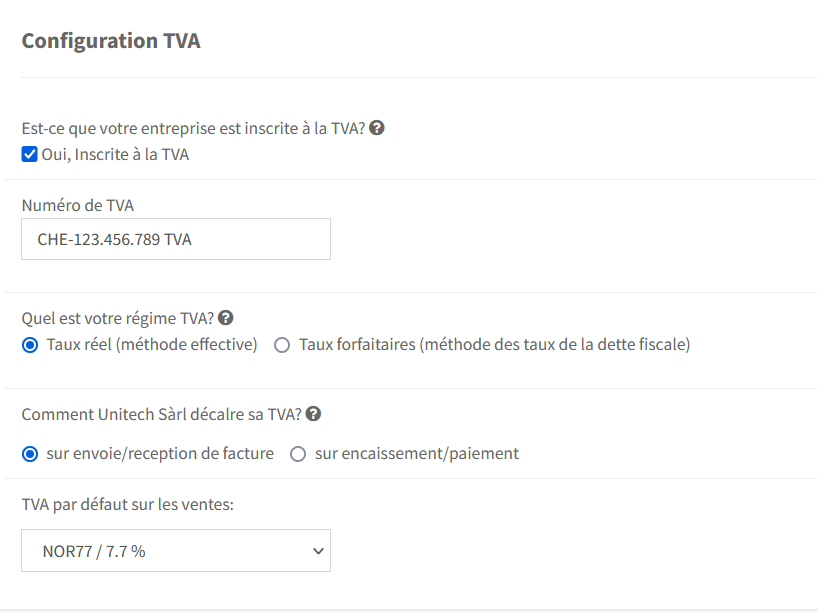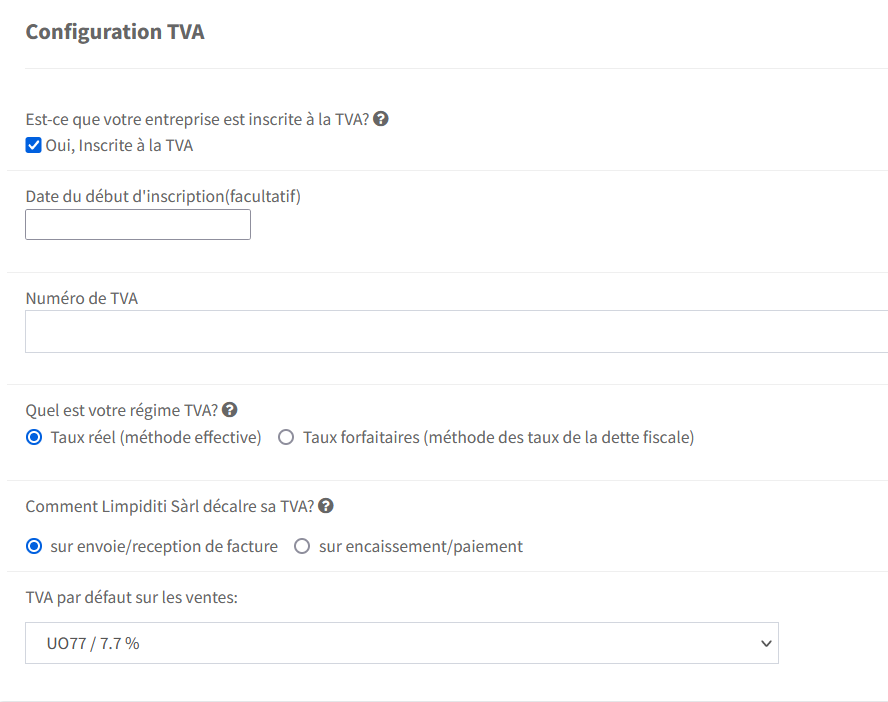In the navigation menu, click on “Settings”, and choose “VAT” tab.
- To the question “Is your company registered for VAT”, change the answer to Yes.
- Indicate the date of registration. Fiduly will manage the change automatically.
- Enter your company’s VAT number
- Choose the VAT calculation method. When registering for VAT with the tax administration, you must choose between the classic method and the simplified method (based on a flat rate of your turnover)
- Choose the default VAT rate on sales to facilitate the drafting of invoices
- Click on “Update”
See the sections below for more information

